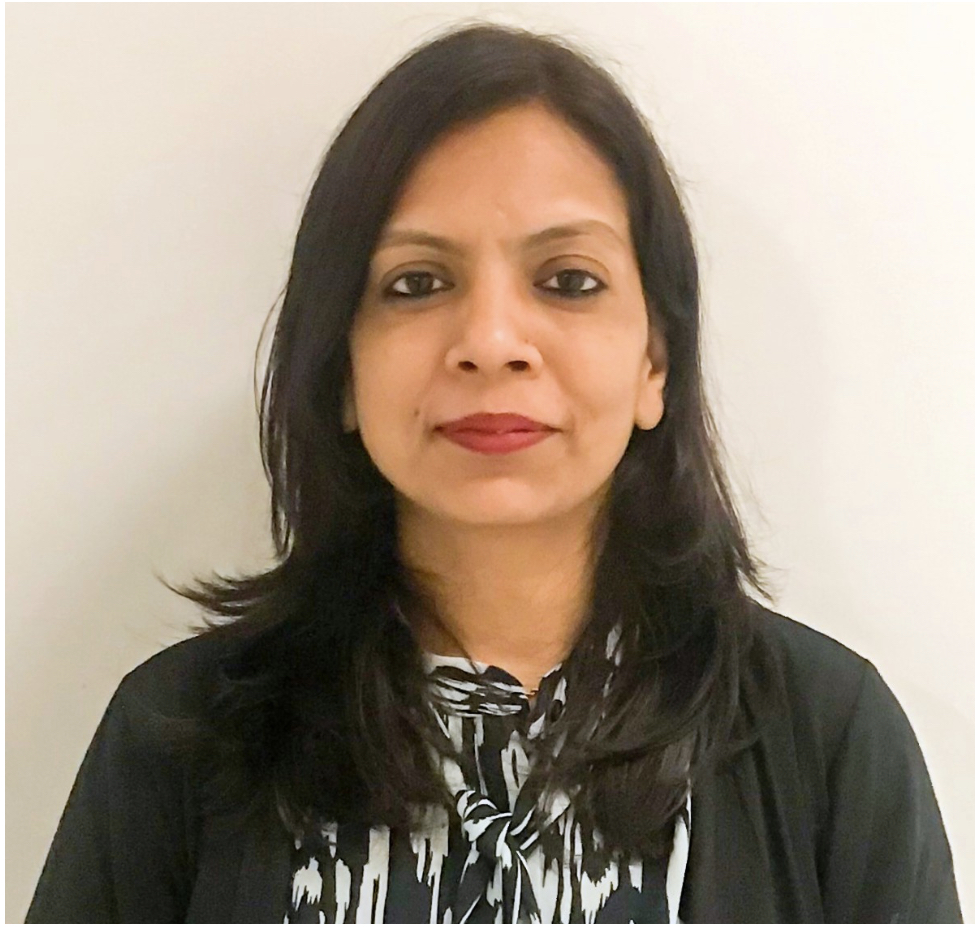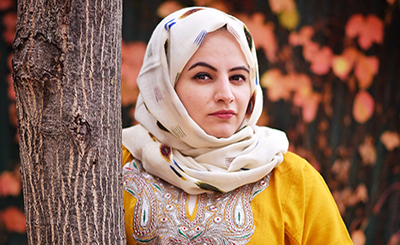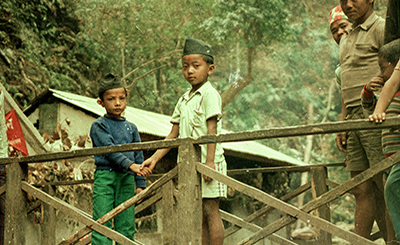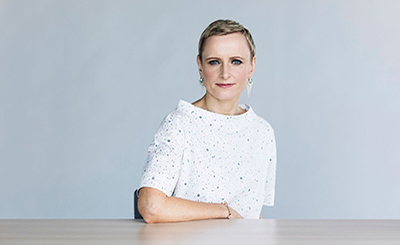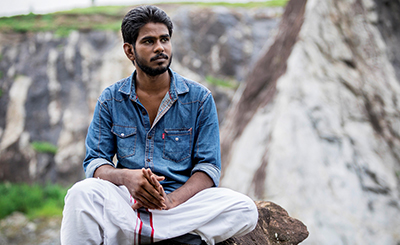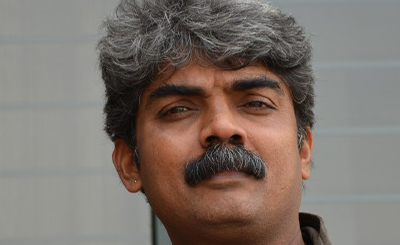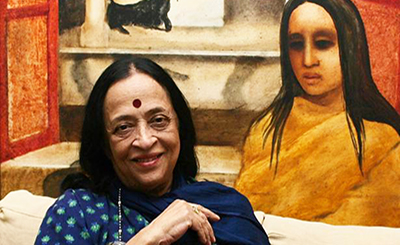
Artist Smita Jain. Photo courtesy of the artist
Smita Jain explores memories of the past and the possibilities of the future in her works. Her background as a textile designer influences her approach to painting and composition; her use of textures and patterns lend atmosphere and mysticism to her work.
Smita Jain’s solo exhibition “Past & Beyond” opened at the Visual Art Gallery, India Habitat Centre, in New Delhi, on May 4 and will be on till May 8. The exhibition, curated by Aakshat Sinha, features her paintings, sculptures, and installations that bring together memories from her travels and juxtapose them with the possibilities of the future.
Jain has been painting and exhibiting her works for over two decades and draws inspiration from her ancestral home in Bihar and her travels to Ladakh, Kashmir, Rajasthan, Banaras, and Europe. As a textile designer by profession, her artistic style of architectural abstraction captures not just the architecture but also the ambiance of the location. Through her acrylic paintings, she tells stories that she heard while being there in person, with vibrant colours reflecting the space’s life and vivacity.
In the exhibition, Smita explores her happiness from her travel memories, and the combination of these memories is reflected in her cityscapes that she paints. She uses printing blocks, stencils, and spatula impasto to create textures and motifs, presenting an assortment of memories hanging in gaps, hidden in shadows, and floating with the clouds. In this interview, she talks about her artistic process, her inspirations, and her journey as an artist. Excerpts from the interview:
What themes and ideas does your solo exhibition ‘Past & Beyond’ explore?
‘Past & Beyond’ explores the memories of the past, my past; and the possibilities of the time beyond. My travels and my experiences have left a mark on my conscious and subconscious mind and my practice has allowed me the freedom to explore them creatively, visually. On the surface my works are landscapes and cityscapes of sorts but they are not reflected in absolute realism, rather they present a moment of time captured with not just the topographical features but also the atmosphere along with all the conversations, musings and movements suspended in time.
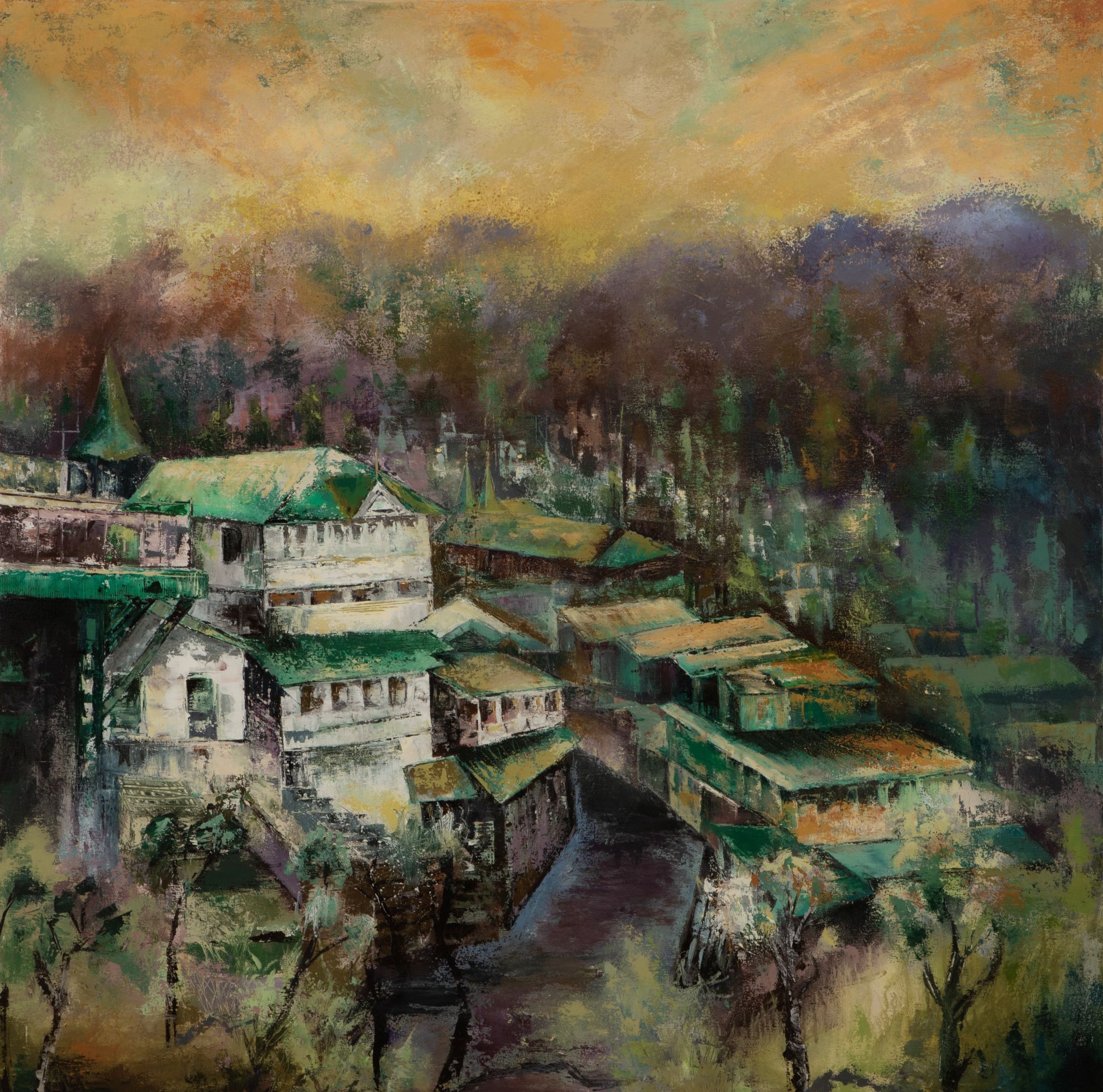
An Evening in Shimla
What was the role of the curator in shaping its content and presentation?
The curator, Aakshat Sinha, served as a perfect sounding board for my dreams. We worked together on what my works mean to me, how I arrive at the final imagery and why I explore what I explore through my works. With his experience, Aakshat was able to create a conducive environment for me to engage better with my art which reflects in the series of works, most of which were prepared specially for the show. At the onset itself, we planned out the show with reference to the space that would be available to us and he helped plan out the movement of a viewer through the exhibition. The works are still mine obviously but he’s been able to represent them in a way where our conversations, questions and answers back and forth, and even silent reflections in between smiles, laughter and agony have made the show that it is today. His role was to be a mirror to my thoughts and helped me to see them vividly through the actualisation of my dreams as paintings and installations.
How do you use your artwork to express memories, and what techniques and styles do you employ to do so?
My works are based on photographs that I might have taken, my sketches on sites and my memories of the same. All of these together, in isolation or in some combination, become the starting point for the art work to emerge. The process of putting paint on the canvas, one layer after another (I work in multiple layers) is meditative and very, very intuitive. Once the first strokes are on the canvas, the painting follows through as a procedure over which I seldom have conscious control. I allow my inner eye to guide the strokes and patches of colours and this is a very personal act for me. I use many different tools to get the textures and compositions that I experiment with and create. The tools vary from printing blocks, cloth/fabrics, spatula/palette knife, brush, fingers, etc. It’s a long list of tools but the objective all throughout is to play around with the 2D format of the flat canvas and create relief structures which lead to a 3D tactile object that one wishes to reach out and touch. At the same time, I use thin paint layers, one on top of the other to create a harmony or diversion, or at least a semblance of it. My work is like this semi-realistic architectural exploration that infuses stories for all who wish to indulge in the act of ‘seeing’ my painting.
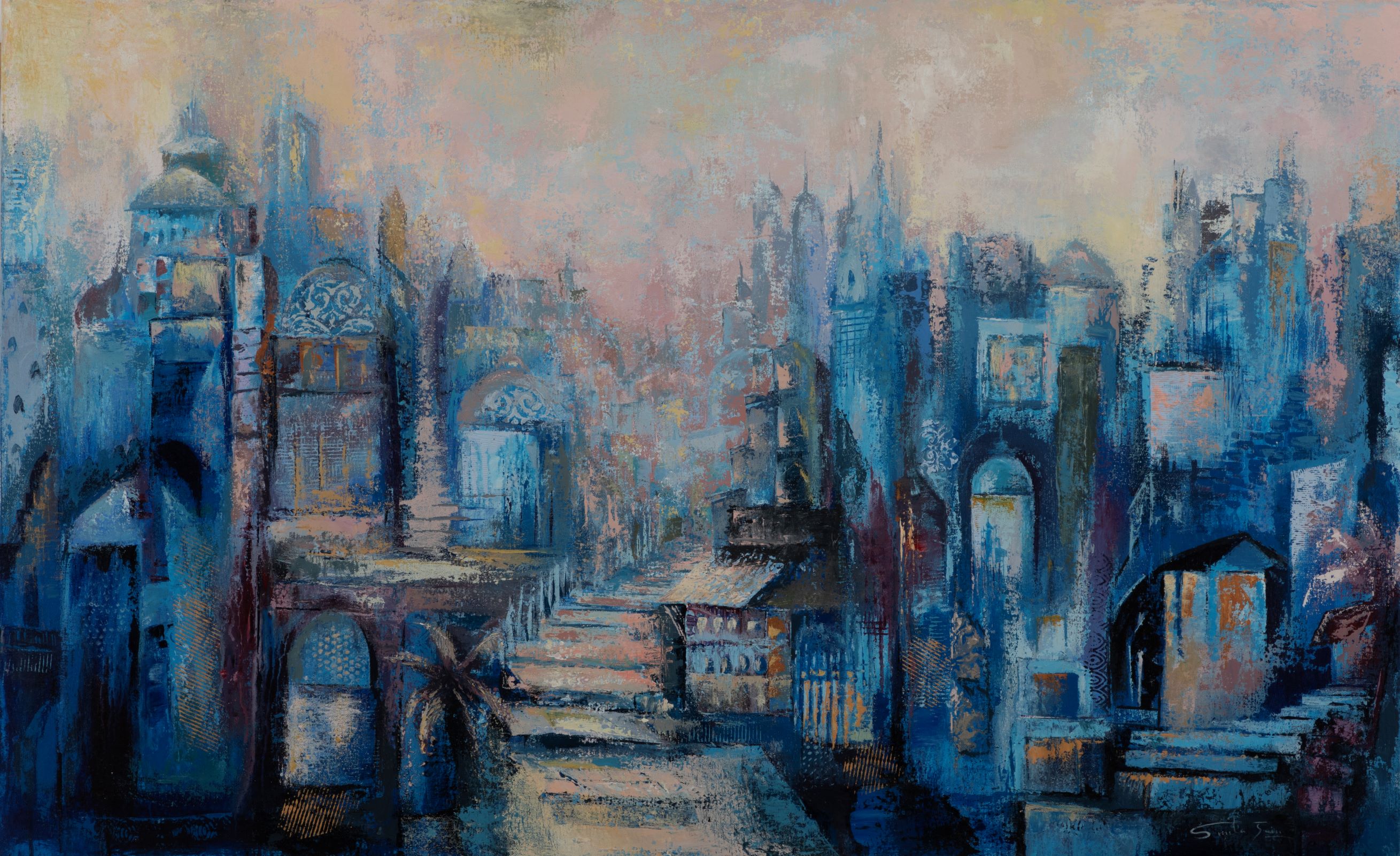
Sapphire City
What is the significance of your background as a textile designer, and how does this influence your approach to painting and composition?
As a textile designer I was exposed to many different textures, patterns and compositions. As I started to paint, I realised that subconsciously a lot of my learning from being a textile designer gets intricately imbibed in my paintings. This is not to say that my paintings combine these elements and experiences to become what they are, rather all my lived life, including my exposure as a textile designer lend snippets and spots of their reflection. This reflection though is not planned. Rather it is assumed and can only be understood once the work is done. Different fabrics and materials allow me to create patterns and textures that lend atmosphere and mysticism also at times to the compositions and paintings.
How has your artistic practice evolved over the 20 years you have been painting and exhibiting your works, and what are some notable trends and milestones in your career? What personal and cultural influences do you draw upon in your artwork, and how do you incorporate them into your cityscapes and other compositions?
When I travel, be it in India or abroad, Europe, Asia or wherever life allows me, I collect tangible and intangible memories. Photographs and sketches are tangible and I can refer to them whenever I want. The visions and fragments imprinted in my memories are intangible and they come and pass fleetingly. In my works the buildings, structures, event foliage and waterways, they all contribute subtly to the identity of the location of where the imagery is set. It could be the monastery, the piazza, a cobbled street or a winding staircase, they all present characteristics that set them apart uniquely. The atmosphere created with the lighting adds to the flavour of the moment of the day used for the setting. History beyond a time is stories which have different vantage points and is always debated for its inclusion or exclusion. I leave that for the viewer to complete for themselves when in the presence of my artwork.
How does the use of colour and texture contribute to the mood and atmosphere of your paintings, and what specific techniques do you employ to achieve these effects? What is the intended impact of your artwork on the viewer, and how do you hope your paintings will be perceived and appreciated?
The best moment for an artist (at least for me) is when a viewer is able to connect with the artwork in a way that it triggers their memories and transports them to their moments of reflection. My paintings have enough architectural material to suggest the location of the site where the memory is built on but the conversations in the air are for the viewer to comprehend. A busy cloud, a smoking chimney, a shadowy alley, a staircase lit up from the light emanating from the open window above or beyond, and more are all elements for the viewers to discover at their own leisure and start their individual emotional trip down memory lane. I hope that my artworks will be a trigger for the viewer to keep coming back to them and find/read another tale which they are the only ones to see. My artworks are simply the gateway.
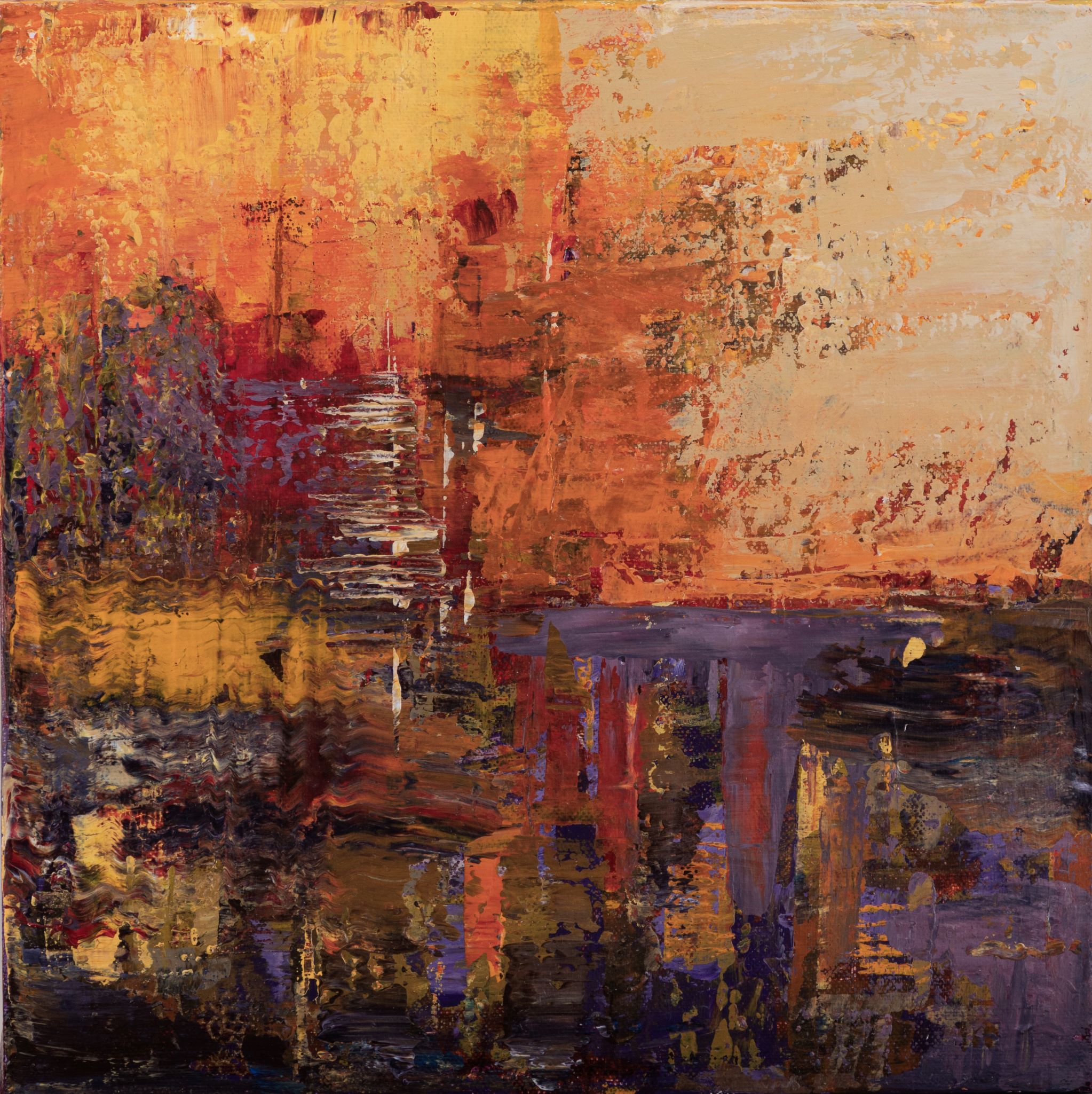
Echoes on the Water
How does your solo exhibition fit into the broader context of contemporary art, and what are some notable trends or themes in the art world that it reflects or challenges?
I am an artist who does not seek nor tries to conform to any set trends or themes be it in the world of art or otherwise. My art is my personal journey that allows me to express my inner feelings and the art works as a result of this practice are honest and open to interpretations. I am an artist of the contemporary times and find my practice rooted in the possibilities of contemporary art expressions. My works are semi-realistic, architectural suggestions of man-made areas of the world. The humans and animals are missing in person but their existence is suggestive. I present nostalgia, memories and possibilities. It is not my effort to belong to a movement, trend or set category. That is for the viewers and critics to decide.
More from Arts
Comments
*Comments will be moderated



